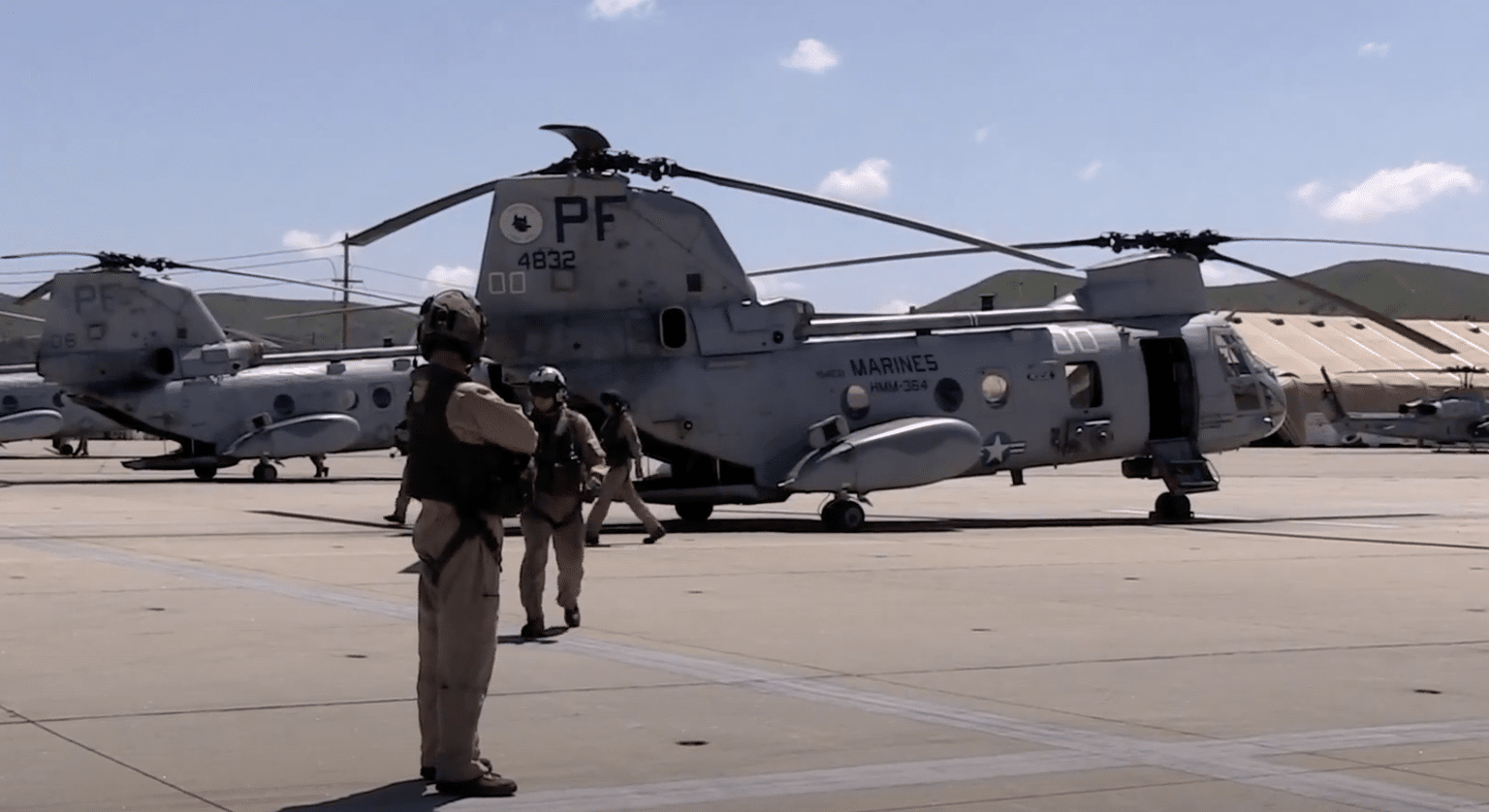The much-beloved CH-46 Sea Knight helicopter was given a proper send-off as the aircraft was officially retired from service by the United States Marine Corps. The multipurpose chopper has been around for more than 50 years but is finally being replaced by the newer Boeing V-22 Osprey aircraft.
To honor it, U.S. Marines with Marine Medium Helicopter Squadron at Camp Pendleton, California, gave it a final fly-off with a mass formation “flying of the barn.” Check it out in the video below:
Originally introduced in the 1960s, the tandem-rotor chopper was designed for longevity and reliability. Known colloquially as the “Phrog,” the aircraft quickly became a favorite amongst airmen who later used phrases like, “phrogs phorever” and “never trust a helicopter under 30,” in reference to the Sea Knight’s dependability in the field.

U.S. Marines with Marine Medium Helicopter Squadron (HMM) 364, Marine Air Group (MAG) 39, 3rd Marine Aircraft Wing “Fly the Barn” on Marine Corps Air Station Camp Pendleton, Calif., Mar. 31, 2014. (AiirSource Military/YouTube)
The chopper first saw action during the Vietnam War and would become one of the prime Marine transport choppers during the war. In the years that followed, the CH-46 would also be used in Grenada during Operation Urgent Fury, it got deployed in 2003 in the Middle East, and it eventually saw use as an integral training aircraft for soldiers at home and abroad.
Today, different variations of the chopper are still utilized in the U.S. and around the world. While its primary use is still for military purposes, some CH-46’s have been outfitted to help fight fires, used for medevacs and even for civilian transport.

U.S. Marines with Marine Medium Helicopter Squadron (HMM) 364, Marine Air Group (MAG) 39, 3rd Marine Aircraft Wing “Fly the Barn” on Marine Corps Air Station Camp Pendleton, Calif., Mar. 31, 2014. (AiirSource Military/YouTube)
The behemoth chopper requires a crew of five to fly: two pilots, one crew chief, one aerial gunner/observer and one tail gunner. The helicopter is capable of transporting up to 24 troops or 7,000lbs of payload.
For its armament, the Sea Knight is equipped with two door-mounted GAU-15/A machine guns and one ramp-mounted M240D machine gun.

U.S. Marines with Marine Medium Helicopter Squadron (HMM) 364, Marine Air Group (MAG) 39, 3rd Marine Aircraft Wing “Fly the Barn” on Marine Corps Air Station Camp Pendleton, Calif., Mar. 31, 2014. (AiirSource Military/YouTube)
With the retirement of the CH-46, this brings in the new, more capable V-22 Osprey aircraft. While not a direct successor, the Osprey is a similar dual rotor military aircraft with both vertical takeoff and short takeoff landing capabilities.
The Osprey is designed to combine the functionality of a conventional helicopter with the long-range, high-speed cruise performance of a turboprop aircraft. The newer aircraft hopes to fill the need for a new long-range, high-speed, vertical-takeoff aircraft.



